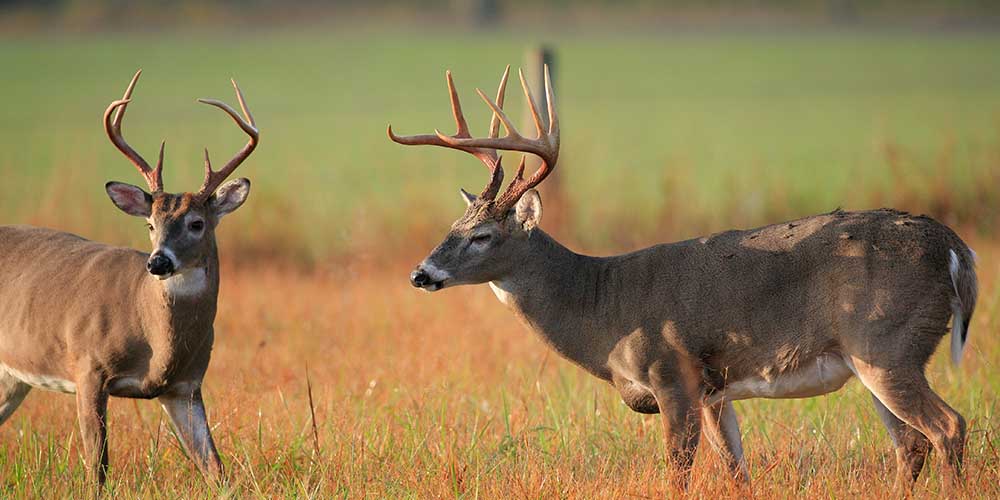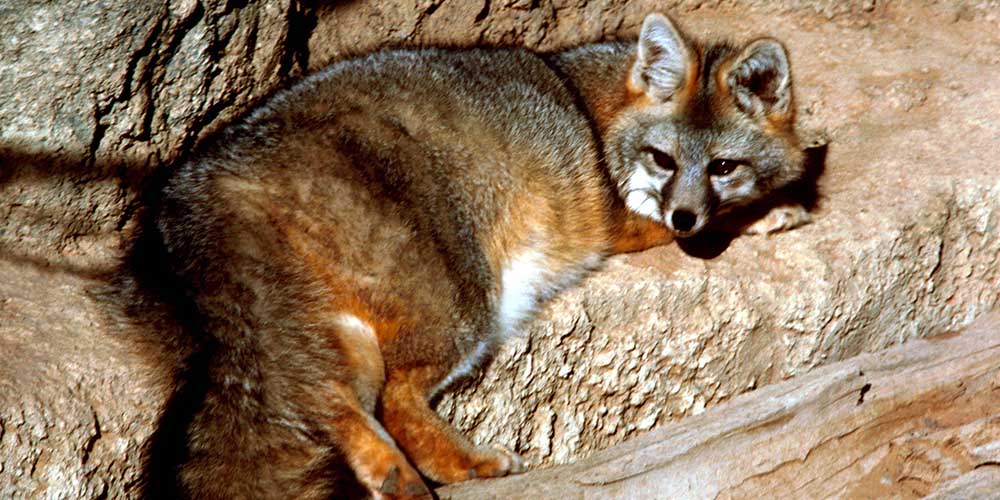Related Stories
Wildlife Stories

Where Have All the Bucks Gone?
FWRC researchers partnered with the Mississippi Department of Wildlife, Fisheries and Parks to study both buck and hunter locations in order to determine things like behavior and geographic overlap. Dr. Bronson Strickland, the St. John Family Professor of Wildlife Management in the Department of Wildlife, Fisheries and Aquaculture and FWRC researcher, and his team used GPS collars to track bucks intensively for two years. They studied approximately 50 bucks collecting their location every 15 minutes during hunting season. Researchers found bucks in heavily hunted areas did tend to have smaller home ranges. They also determined that bucks tended to avoid areas frequently visited by hunters.
“This data tells us that over time bucks may learn to avoid areas with high traffic from humans,” said Strickland. “Instead of returning to the same stand every Saturday, it might be wiser for a hunter to wait for ideal conditions to hunt a particular area and then give that area a rest for a few weeks after the hunt.”
2019

Understanding Ecology of Gray Foxes and Asian Bear Population Estimation
Finding better ways to study foxes and bears in the forest helps animals and humans alike, according to one FWRC population ecologist. Dr. Dana Morin, assistant professor of wildlife ecology and FWRC scientist is motivated to discover the best animal population monitoring methods. Morin contributed to two studies considering how to utilize camera traps to monitor population trends and understand drivers of population change amongst different species. She and her collaborators from the U.S. Forest Service, Southern Illinois University Carbondale, and the Illinois Natural History Survey studied how competition may contribute to population declines in gray foxes. Morin also has evaluated combined methods in her current research to discover what density estimation methods are best suited for monitoring Asian bears.
The team found that unmarked estimation methods were unreliable for low density species, the case for most Asian bear populations, but accuracy and precision improved when camera trap data was used in conjunction with additional sampling methods. In addition, the research concluded that detecting population declines in Asian bears or other low-density populations would require sampling at extensive spatial scales, collaborations, and coordination of study designs and sampling protocols. The gray fox research was funded by Illinois Department of Natural Resources, Federal Aid in Wildlife Restoration Project, USDA Forest Service, Pacific Northwest Research Station, and USDA National Institute of Food and Agriculture McIntire Stennis Program. The Asian bear research was supported by USDA National Institute of Food and Agriculture McIntire Stennis Program with additional funding provided by the Research Council of Norway.
2022

Understanding Habitat Preferences of an At-Risk Wildlife Icon
Approximately 10,000 years ago after the last glaciers retreated, dozens of waterfowl species, mallards and black ducks settled in what are now Canada and the United States. These species share many common traits, but they remained geographically partitioned until recent history. Dr. J. Brian Davis, FWRC scientist and James C. Kennedy Endowed Chair in Waterfowl and Wetlands Conservation, is studying the American black duck, whose number have been dwindling over the past 50 years.
The research team including Davis, fellow FWRC scientists, a professor from the University of Tennessee, and former MSU graduate student and lead author Kira Monroe, set out to investigate the habitat selection and patterns of wintering black ducks at the refuge. Their goal was ultimately to know whether the refuges were meeting the needs of the black ducks. At the beginning of the study, Davis and his team speculated that mallards could be outcompeting black ducks for food or refuge habitat space. However, the location data and site observations gathered during the study supported no evidence of competition between mallards and black ducks. The team observed the specific types of habitats the black ducks prefer and found that, while they did use flooded agricultural land, they prefer red native herbaceous wetlands and "scrub-shrub" wetlands over other land cover types.
This project was funded by MSU's Forest and Wildlife Research Center and the James C. Kennedy Endowed Chair in Waterfowl and Wetlands Conservation, the U.S. Fish and Wildlife Service, the University of Tennessee Institute of Agriculture, and the Central Hardwoods Joint Venture.